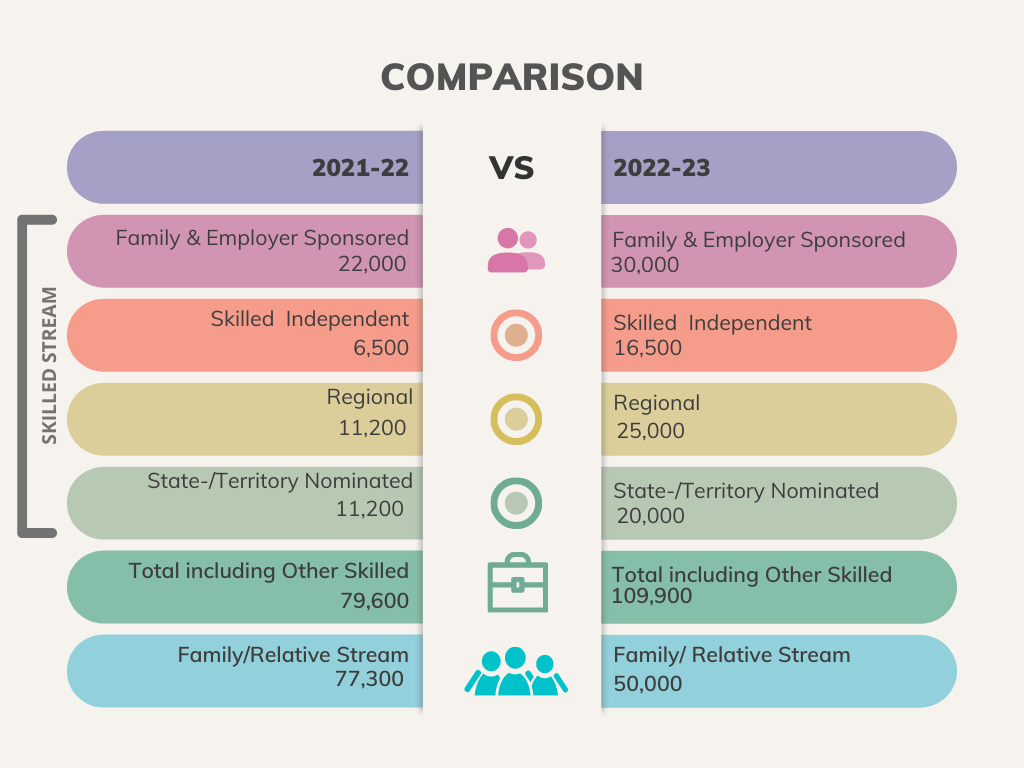
The Australia Migration Program resets the number of places allocated for the various visa subclasses and the nomination quota allocated to each state on the 1st July every year. It would be fair to think of it as the commencement of its migration year. The number of places allocated are broadly classified under two streams- Skilled and Family. This allocation does not factor in the temporary entrants into Australia but includes a small percentage of special abilities visas.
In the last one decade the annual quota for the visa allocations has ranged between 160,000 to 190,000 places each year. Since 2019, the quota has remained consistent at 160,000 visas to be granted in a year with the skill stream and the family stream accounting for the majority of visas granted each the Migration Program.
While the ANZSCO [Australian and New Zealand Standard Classification of Occupations] pans out a vast list of occupations, only those listed on the Medium and Long-Term Strategic Skills List [MLTSSL], a Short-Term Skilled Occupation list [STSOL, and a Regional Occupation List [ROL]. These lists are reviewed each year by the National Skills Commission to reflect the skills shortages. In September 2020, a Critical Shortage List was introduced to manage the shortages in the critical sectors during the COVID-19 pandemic, however, it remains to be seen whether this list will continue to be in effect from 1 July 2023 now that the borders have fully opened to offshore entrants.

The 2022-23 Migration Program is clearly Skilled Migration centric with about 70% of the planning levels allocated to skilled migration the reversal of the trend in quota is visible in the shrunken quota for family migration, out of which partner and child migration is demand driven, an estimate and not a ceiling.
The increase in quote for Skilled Migration denotes more applicants receiving invitations to apply for 189 visa , more 190 nominations and a larger number of sponsorships/nominations becoming available for 491 visas.
The emphasis on filling the skill shortages in the Australian labour market, especially the regional areas is evident from the surge in the quota for State Nominated and regional visas. Aspirants who have been long awaiting the state nominations will have a lot to look forward to when the 2022-23 Migration plan comes into effect on 01 Jul 2022. Following is a breakdown of the allocation comparison for the migration year 2021-22 and 2022-23.
The stagnation in terms of limited nomination offerings and halted processing of the skilled visas is now expected to pick pace and leverage offshore applicants with opportunities they have been long waiting for since 2020.
